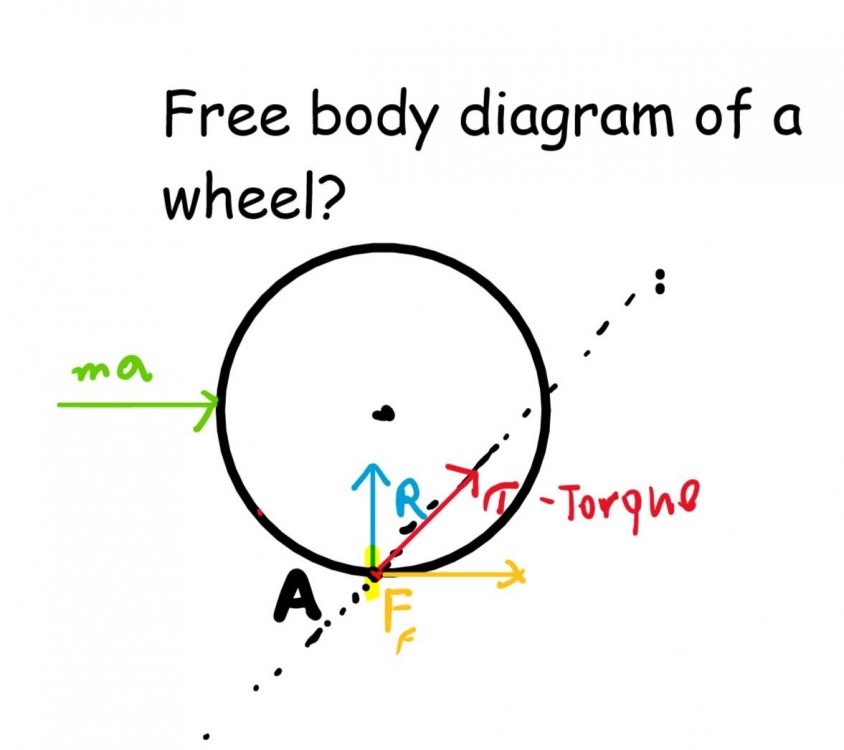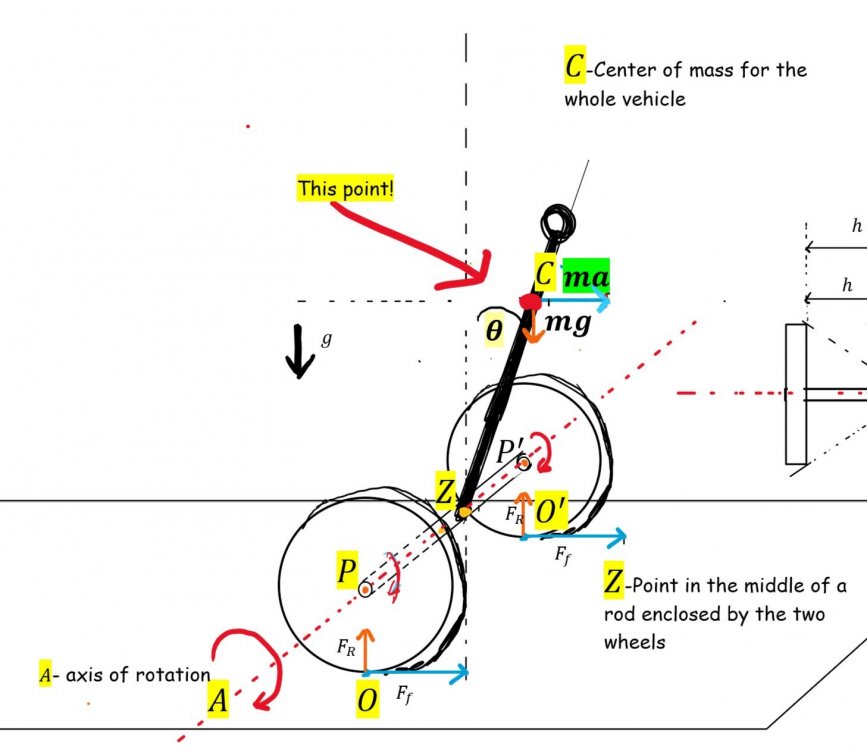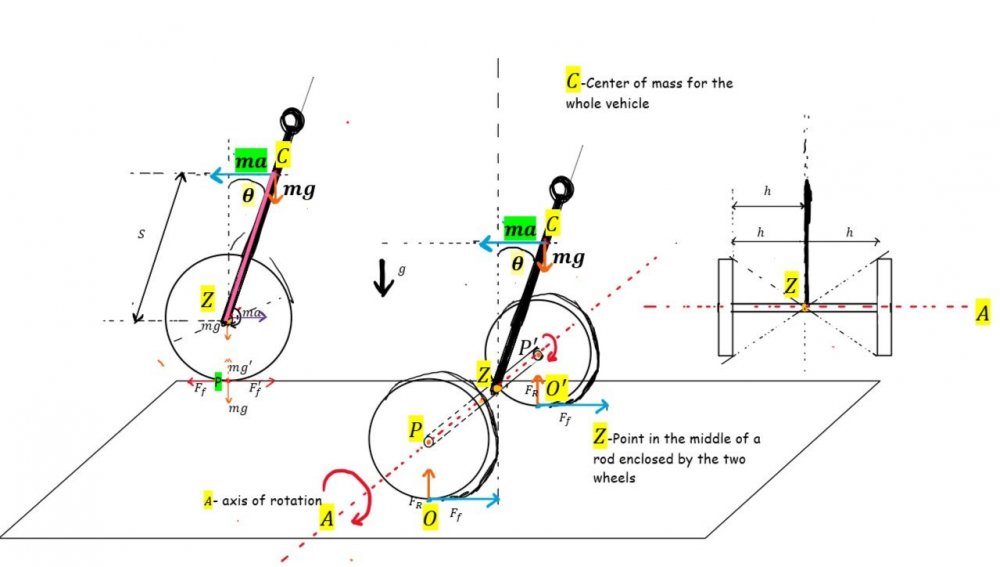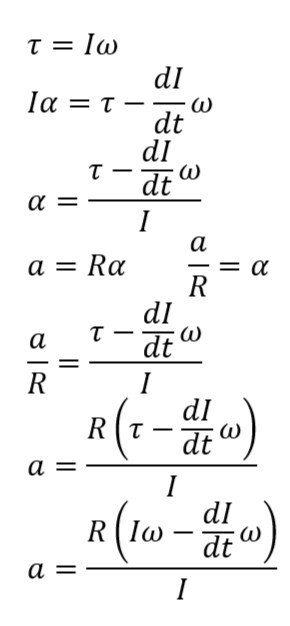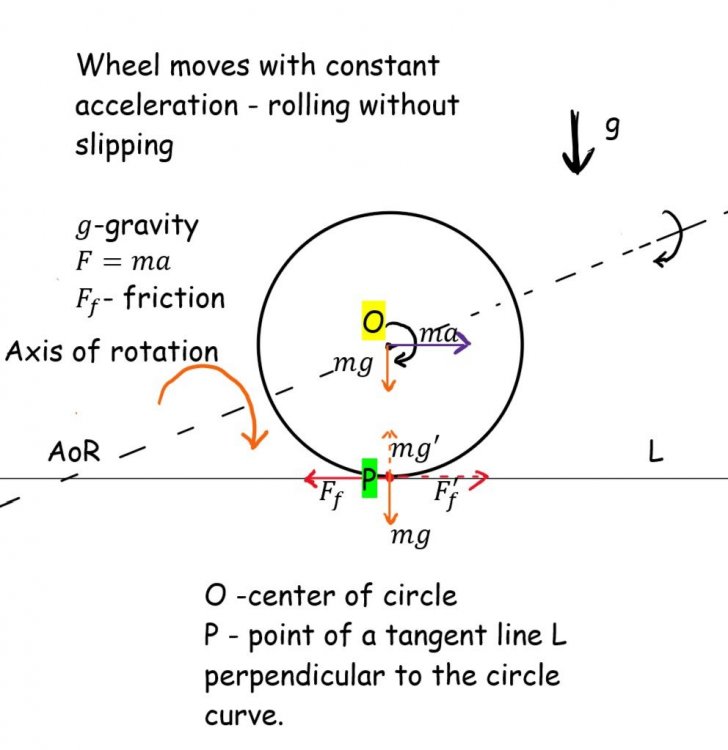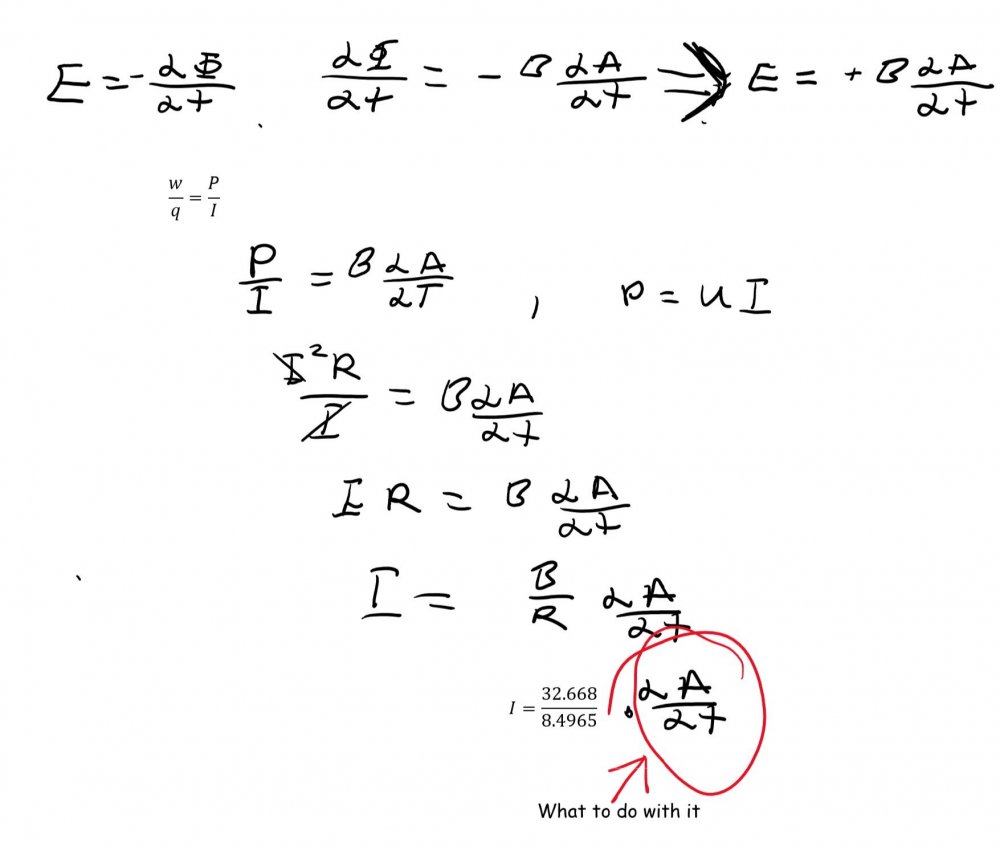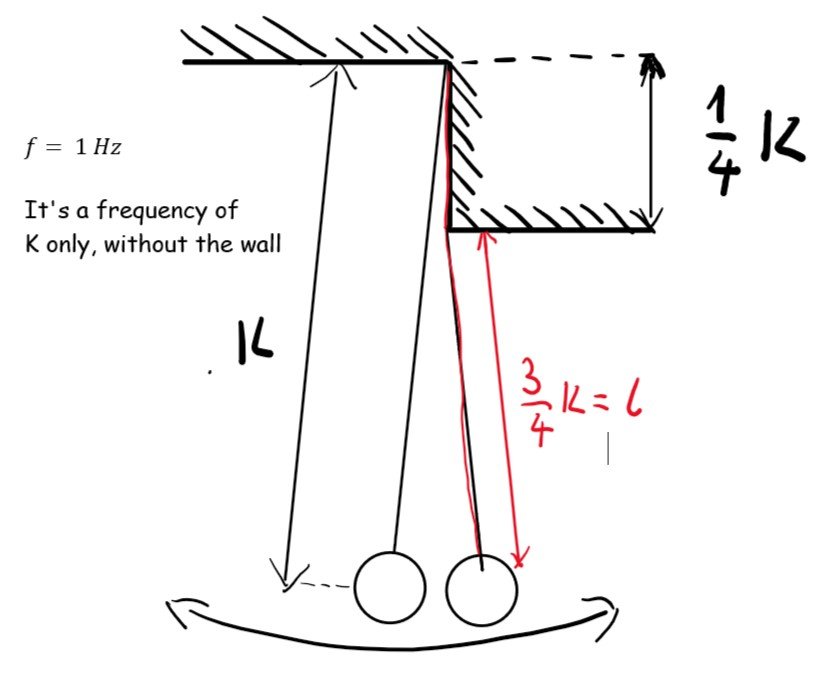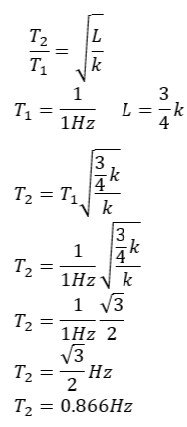

Classical Physicist
Senior Members-
Posts
33 -
Joined
-
Last visited
Profile Information
-
Favorite Area of Science
Classical Mechanics
Recent Profile Visitors
932 profile views
Classical Physicist's Achievements

Quark (2/13)
1
Reputation
-
force applied to a wheel F=ma rolling friction is F=-μR normal force R=-mg Is that right? going back to the Two-wheeled inverted pendulum that i have to find acceleration of, by using the point c that is the centre of mass of the whole vehicle, how do I go about finding the torque at that point, which is on a line that is displaced at exactly the center of the rod that is in the axis of rotation of a vehicle… ? I Really need to figure it out @studiot. I can't even tell you how much It would mean to me if we figured it out!
-
Yes, It's easier to draw few FBD's for each of the wheels/ points, instead of making complex sketches full of informations… Also what a cute car did You draw! - It's looks just like an Aston Martin! I will send Wheel FBD's here shortly. After this we should go back to finally analyzing the motion, right?
-
I'd say that the only net forces acting on a point C of a vehicle are torque (2h mg sin θ ) force that gives us acceleration of a vehicle (2h ma cos θ ) and torque of a point C that is τ=Iω Image: Sorry I've been trying to figure it out for days and I still have trouble with applying these forces in order to solve this problem, so I may have a flawed understanding of it right now. As I understand "Rolling motion" is a sum of translational motion and rotational motion. So you suggest starting with finding/composing some equations that will describe the motion of this vehicle? - Sounds correct. I'll see what I can do.
-
I think I can- but it's really not that simple when there's so many parts here to consider. It simply moves (accelerates uniformly with this unknown yet constant acceleration) in the right direction as the picture suggests. So it's not moving upwards/downwards- just rolling without slipping we assume here that this motion is in the right direction of this horizontal plane. So I think we can say that the equilibrium is met here. I don't see what you tried to post here- is it incomplete? Because you talk here about "the accelerating force on the vehicle" I drew here a non-inertial case of this vehicle in motion - so ma would be the force that it takes to keep the motion going,
-
Okay so having all of these Drawn out, how can I find acceleration a that is at the point c which is centre of mass of a vehicle like this? @studiot, @Lizwi And am I Missing some important factors here? - θ is the angle that the pink/black rod moves from the equilibrium position that is on the normal line to the surface in order to accelerate a vehicle- something like a segway/ moving inverted pendulum. Thankfully we can omit the rolling resistance - (forces that make the vehicle decelerate) But torque for a point C would have to be a sum of torques acting on this point - right? And from here we would make some equations and transformations in order to find the acceleration a?
-
Let's picture a Rolling without slipping Wheel, that constantly accelerates. radius of a wheel/circle is rr. Basically any wheel of a vehicle is rotating around its fixed axis - AoR -(axis of rotation) Most of the times wheels have this AoR perfectly in the center of the circle/wheel/cylinder. What I want to understand is how can we describe the torque of such a wheel? Because as I understand we could go about finding torque for the center of the circle - point O. I am not sure if it's possible to find the torque for the point P, that is point on a line tangent to the circle on the surface level.
-

Unusual problem from Electromagnetism.
Classical Physicist replied to Classical Physicist's topic in Classical Physics
-

Simple pendulum with a twist
Classical Physicist replied to Classical Physicist's topic in Homework Help
@studiot I guess I have to yet find the third period that is of the overall system so (0.867+1)/2 = T3 That is 0.93? -
hey It's me again, I need Help with this pendulum problem, it is easy : The frequency of vibrations (fluctuations) with a small amplitude of the ball attached to a weightless string is 1 Hz. I have to find the frequency of small vibrations of this body suspended on the same string near the edge shown in the picture. The distance d of the edge from the suspension point is 1/4 k. it's easy but i have trouble with comparing it to the "seconds pendulum" Because with seconds pendulum we get frequency f= 1/2 Hz. but here we have so can we compare the two periods like this? so plugging these in I got this: is this correct? @studiot
-

Unusual problem from Electromagnetism.
Classical Physicist replied to Classical Physicist's topic in Classical Physics
Love it, Thanks again, I'll post the further answer shortly, …. so how can I insert the maths in here? beause I tried with LateX syntax but it didn't output this nice formatting that you post here? -

Unusual problem from Electromagnetism.
Classical Physicist replied to Classical Physicist's topic in Classical Physics
I'm confused The “height” of the triangular area enclosed by the underneath wire and the one above is the same as the distance traveled in time v: d = vt, also the base of the triangle like that equals to λ (as in picture) so we get 1/2* λ*vt=A Do I understand correctly that λ is the length of the wires? - in which case the bent one has λ as a sum of these "sides",so that each side is λ/2? however geometric look at the picture denies that- so the bent part would be 2λ, 1 λ for each side, just like the moving wire above, with l=1 λ. I still don't get which exact triangles should I take into consideration, I mean I understand these ratios, but which triangles with an angle of 45, 45 and 90 from the problem do I need, exactly? Never Thought that I would have to ask you about such trivial stuff, but hey I am very tired right now… However that is still not an excuse.


